
The Israeli bombardment included more than 52 strikes across southern Lebanon after 9pm (4am AEST), Lebanon’s state news agency NNA said. Three Lebanese security sources said these were the heaviest aerial strikes since the Gaza war began in October.
The White House said a diplomatic solution was achievable and urgent, and Britain called for an immediate ceasefire between Israel and Hezbollah. The US is “afraid and concerned about potential escalation”, White House spokesperson Karine Jean-Pierre told a briefing.
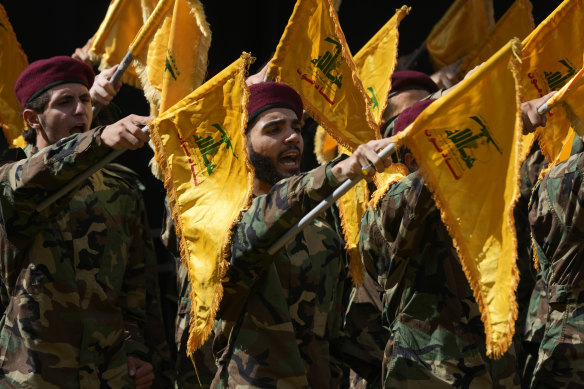
Hezbollah members attend the funeral of two comrades killed on Wednesday when a handheld device exploded.Credit: AP
The Israeli Defence Minister Yoav Gallant said Hezbollah would “pay an increasing price” as Israel sought to make conditions near its border with Lebanon safe enough for kibbutz residents to return.
“The sequence of our military actions will continue,” he said in line with earlier remarks about his country being in a “new phase” of the war.
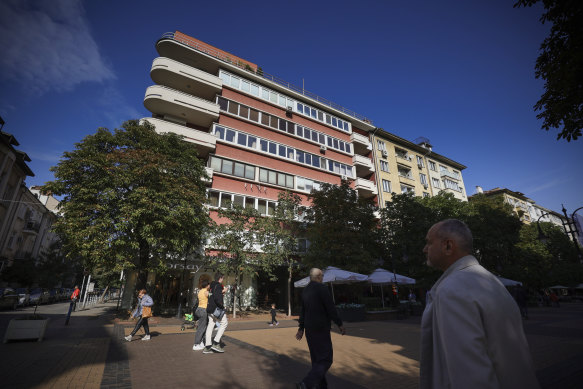
People walk past a building where the Sofia-based company Norta Global is headquartered.Credit: AP
The attack on electronic devices appeared to be the culmination of a months-long operation by Israel to target as many Hezbollah members as possible all at once – but civilians were also hit.
Nasrallah said the group was investigating how the bombings were carried out.
“Yes, we were subjected to a huge and severe blow,” he said. “The enemy crossed all boundaries and red lines,” he said. Pointing to the thousands of devices hit, he accused Israel of intending to kill thousands of people at one time. “The enemy will face a severe and fair punishment from where they expect and don’t expect.”
He said Hezbollah would continue to pound northern Israel as long as the war in Gaza continued, vowing it would not return its people to the border region. “The only way is [to] stop the aggression on the people of Gaza and the West Bank,” he said.
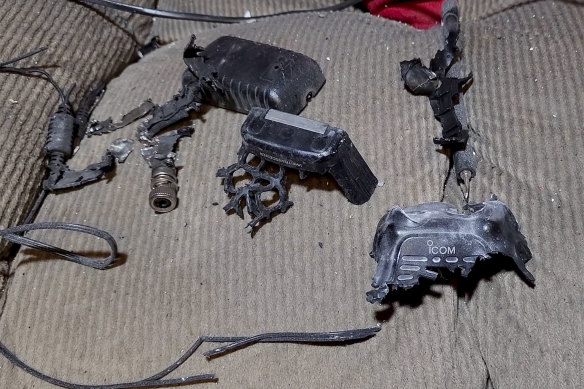
This video grab shows a walkie-talkie that exploded inside a house in Baalbek, east Lebanon.Credit: AP
Meanwhile, Bulgaria and Norway became new focal points of a global hunt for who supplied Hezbollah with the pagers. Security sources said Israel was responsible.
How and with whose help the pager attack was carried out was not yet known, although so far there were possible leads in Taiwan, Hungary and Bulgaria.
On Friday, Taiwan’s economy minister said the components used in the pagers were not made in Taiwan. “The components are [mainly] low-end IC (integrated circuits) and batteries,” Taiwan’s Economy Minister Kuo Jyh-huei said adding the case was under investigation by judicial authorities.
It is not clear when the pagers were weaponised so they could be remotely detonated. The same question remains for the hundreds of hand-held radios that exploded on the second wave of attacks. Some of them carried the logo of Japanese manufacturer Icom.
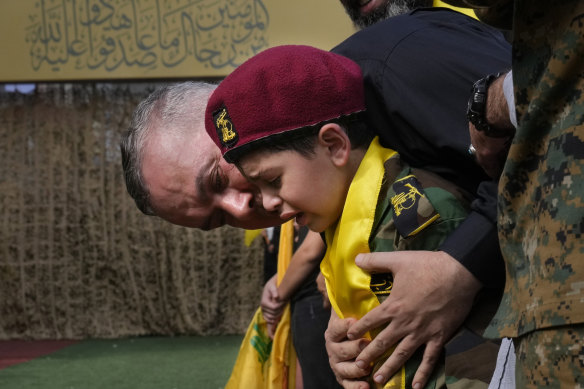
A man comforts a boy crying during the funeral procession of Hezbollah members in Beirut.Credit: AP
Bulgarian authorities also said its Interior Ministry and State Security Services had opened an investigation into a company’s possible ties.
Loading
Local media reports said Sofia-based Norta Global had facilitated the sale of the pagers to Hezbollah. Citing security sources, national broadcaster bTV reported €1.6 million ($2.6 million) in funds related to the transaction passed through Bulgaria, and was sent to Hungary.
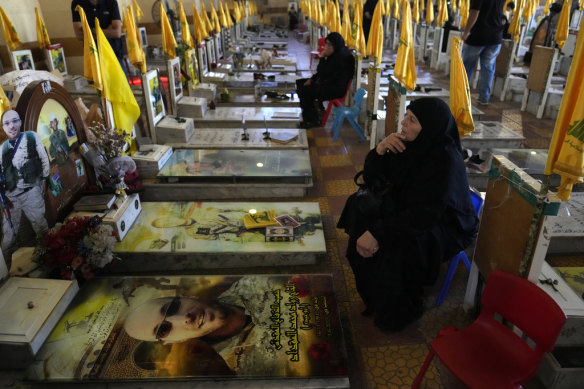
Women visit the graves of killed Hezbollah members in the southern suburbs of Beirut.Credit: AP
Reuters could not immediately confirm the claim.
Loading
Emails sent to a Norta email listed on Bulgarian company registration records were returned as undeliverable. The firm’s founder declined to comment.
Images of destroyed pagers analysed by Reuters showed a format consistent with devices made by Taiwan’s Gold Apollo. Gold Apollo said the pagers were made by BAC Consulting, a company based in the Hungarian capital Budapest.
The owner and CEO of BAC Consulting, Cristiana Barsony-Arcidiacono, did not return multiple requests for comment by phone and text message.
She told NBC News that her company worked with Gold Apollo but that she had nothing to do with the making of the pagers.
Hungarian news site Telex reported that the sale was facilitated by Norta Global, citing sources.
Norta’s Bulgarian headquarters are registered at an apartment building in the capital Sofia that is also home to nearly 200 other companies, according to a local company registry. There was no sign for Norta.
Reuters, AP
Get a note directly from our foreign correspondents on what’s making headlines around the world. Sign up for the weekly What in the World newsletter here.









 Add Category
Add Category